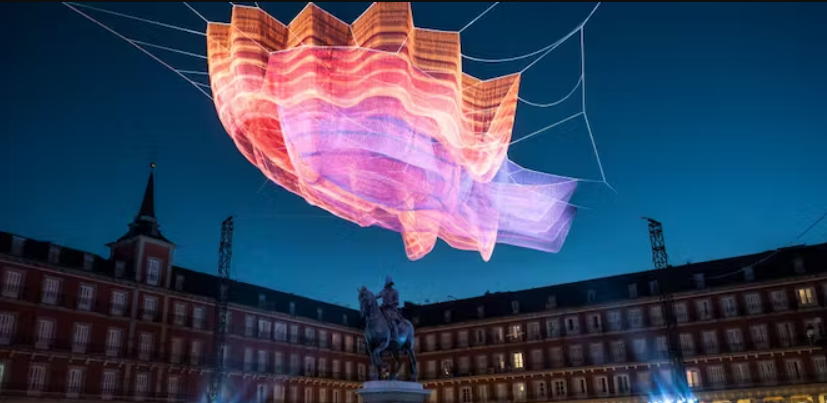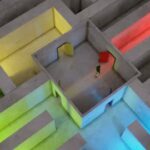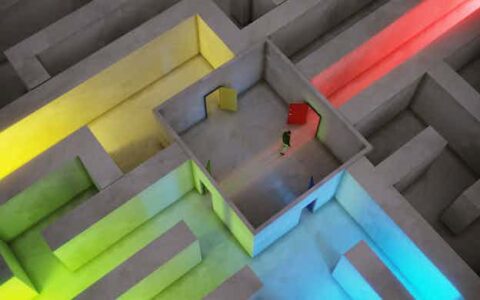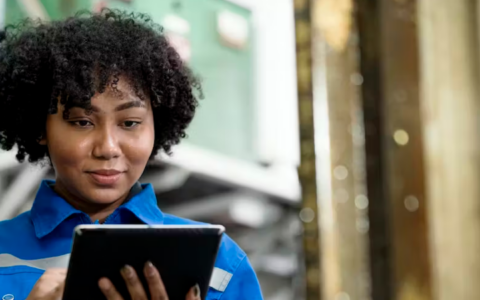Janet Echelman, Mellon Distinguished Visiting Artist, Massachusetts Institute of Technology (MIT)
Janet Echelman says she never set out to be a sculptor of wind. But if you have ever explored Porto, Portugal, walked the streets of Gwanggyo, South Korea, or passed through West Hollywood, you might have seen her massive iridescent sculptures of fiber floating above cities and the millions of people in them. Working closely with engineers, Echelman has spent the past 26 years of her career producing sculptures that rival the size of skyscrapers.
In March, Echelman spoke at the 2023 Imagine Solutions Conference in Naples, Florida, about her journey to becoming a sculptor, her creative process and how her sculptures have forever changed the landscapes of the cities where they ripple, dance and billow in the wind.
Janet Echelman speaks at the 2023 Imagine Solutions Conference.
What inspired you to create this type of art?
I began my career as a painter. In 1997, I traveled to India as a Fulbright scholar and planned to give exhibitions around the country. I had my paints and brushes shipped to India from the U.S., but they never arrived. As the deadline for the show loomed, I had to come up with something fast. In Mahabalipuram, the Indian fishing village where I was staying, I would watch the fishermen work and reel in their mounds of netting on the beach at the end of each day. One day, it occurred to me that those nets would make excellent material for sculptures. By the end of my Fulbright year, I had created an entire series of these netted sculptures with the fishermen, called the Bellbottom Series, named after the popular bell-bottom pants.
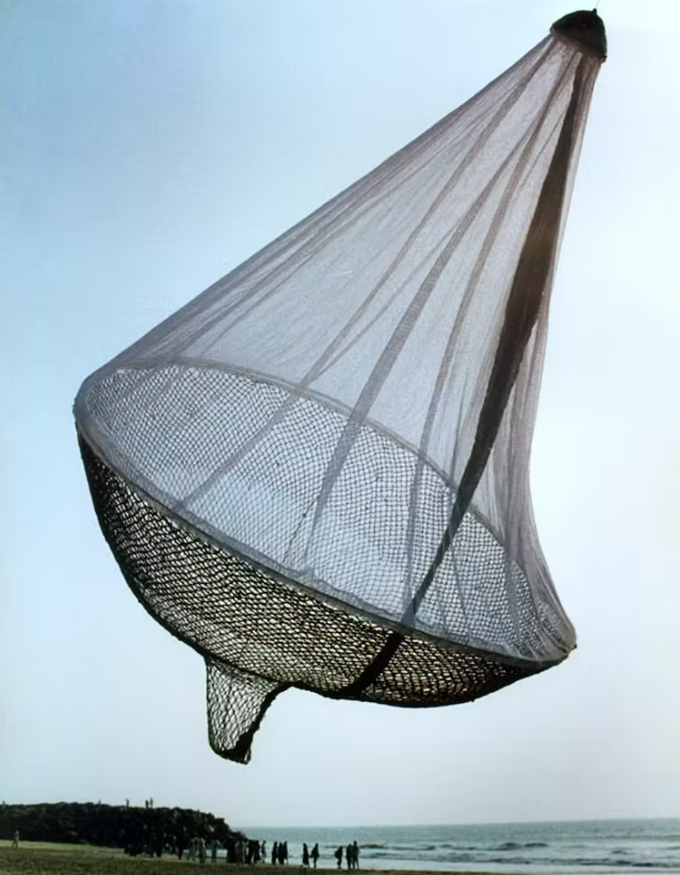
I’ve been working to develop and refine this visual language ever since. It’s an ever-evolving challenge to go from making handmade nets on the beach with fishermen in India to creating works the scale of one or two city blocks attached to skyscrapers.
How do you approach the engineering side of your art? How are these pieces constructed, especially given their large scale?
Every piece is planned out digitally first. The first sketches are very simple – it’s just me with a pencil.
But the final design in our studio is a complete digital color 3D model. We can see how the sculpture sits in space and how it attaches to everything around it. We’re able to move around the three-dimensional site to see the work from all sides.
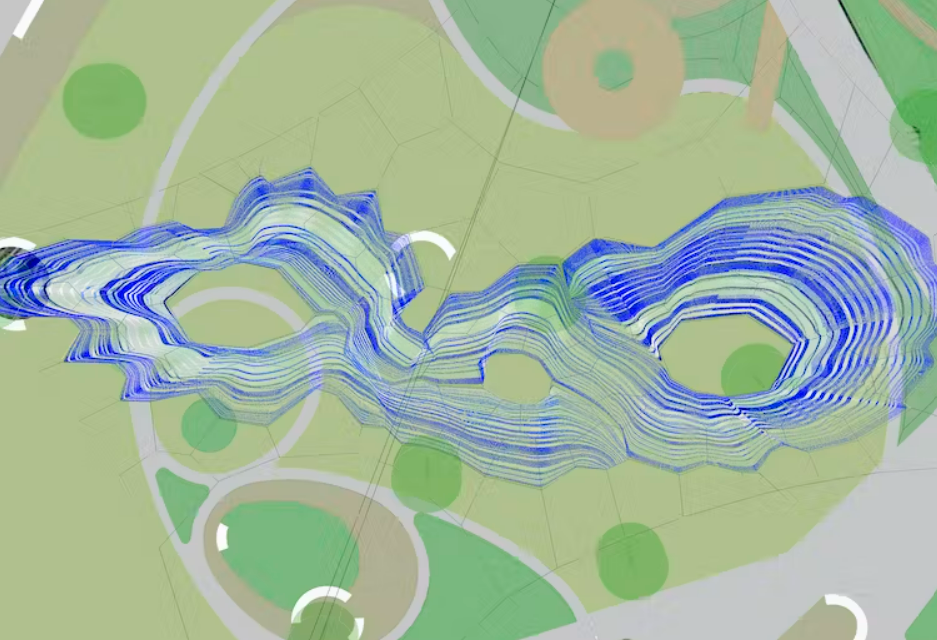
The 3D digital model of ‘Bending Arc,’ Echelman’s sculpture in St. Petersburg, Fla. Janet Echelman (contact The Conversation for photo rights)
My team and I have engaged in a decade of development of original computer software to do soft-body modeling of our sculptures, which allows us to design our 3D netted forms while understanding the constraints of our craft, showing response to the forces of gravity and wind.
Every element – every line of twine, and every knot – is modeled in terms of its thickness, stiffness, weight and density. So it’s actually quite an endeavor to analyze such unusual structures that are both porous and fluidly moving. This is not the standard – building departments typically analyze solid buildings made of things they know, like steel and concrete – so this is really pushing everyone to work in new ways.
In terms of the physical construction, my sculptures appear delicate yet are incredibly strong. They have to be able to withstand winds of a Category 5 hurricane. We achieve that by using highly engineered materials, including a fiber that NASA used for the Mars Rover called ultrahigh-molecular-weight polyethylene, which is custom-braided into structural ropes. We use a variety of other fibers to create the braided twine for the soft layers of each sculpture.
The ropes are then all hand-spliced together with methods that have been used for hundreds of years to construct boats in the maritime industry. These are old human technologies passed down from generation to generation.
Once we have these knotted net panels, we incorporate different colors to create patterns within the work. These panels are then attached to rope structures and usually lifted into space using cranes. My team pulls them into tension so that they can withstand immense forces of nature.
What was the hardest sculpture to create from a technical standpoint, and why?
My commission for the St. Petersburg pier in Florida titled “Bending Arc” was challenging, because it needed to withstand a Category 5 hurricane – and yet we did it. There’s footage of it during Hurricane Ian, and it was just dancing beautifully.
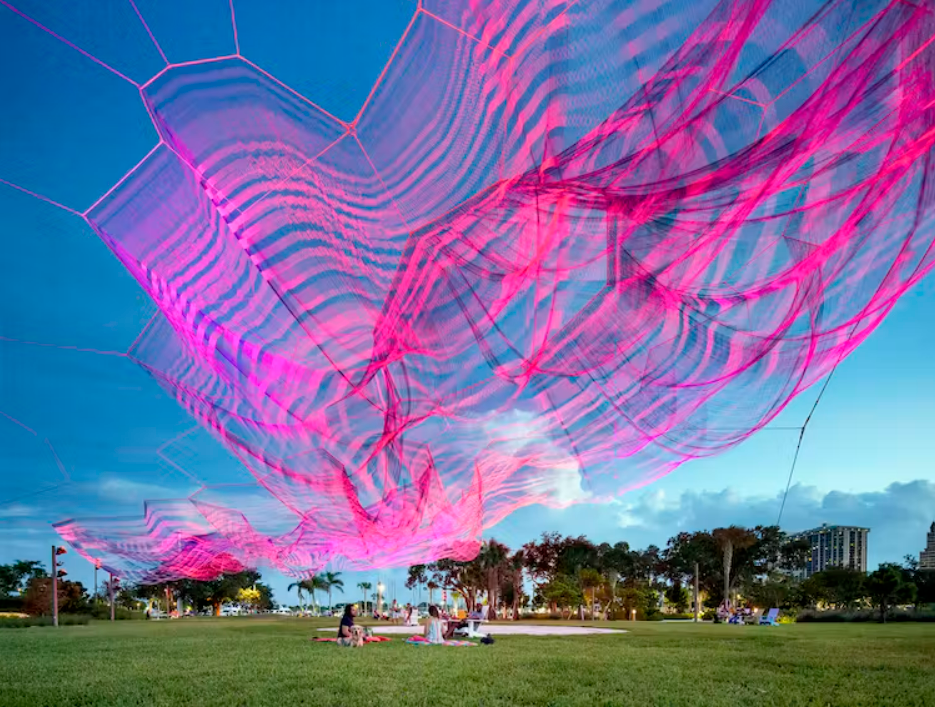
‘Bending Arc’ in St. Petersburg, Fla. Janet Echelman (contact The Conversation for photo rights)
Hurricane testing starts in the design stages. Our detailed digital models are tested and analyzed for their capacity to withstand certain forces of wind, which, for public safety reasons, is required in order to obtain a building permit. My sculptures have to satisfy the same requirements as a skyscraper, and they can withstand the same forces as any major building.
What are you currently working on that you’re excited about?
I am excited to continue to explore the relationship between dance and art. In 2014, I collaborated with the Stuttgart Ballet in Germany to create sculptures that dancers could interact with in their performances.
Since then I have worked with a choreographer and engineer at Princeton University to create a sculpture that the dancers actually enter into and interact with. Their movements cause the sculpture to move and appear as if it were a dancer itself at a larger scale. I see it as an exploration of our planet and its climate. It illustrates how the Earth and human beings are always mutually influencing one another – and yet we are not equals.
What do you hope your art evokes in people?
It’s important to me that each person can create their own meaning from art. They are the expert in their own experience.
If my work offers a moment of contemplation and allows you to feel a sense of calm and your own interconnection with the wind, sun, people and city, then that’s all I could hope for. I like how complete strangers often start talking to each other underneath the sculptures. Our cities are made up of straight lines and hard edges and my sculptures offer something completely different – they are soft and adaptable, yet they’re the same scale as skyscrapers.
If my art prompts people to contemplate that the world can be built in a completely different way than it always has been, if it opens up questions, then that is the most an artist could ever hope to do.

